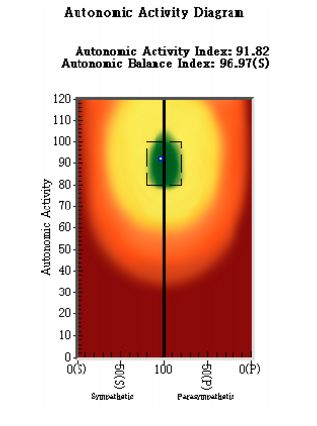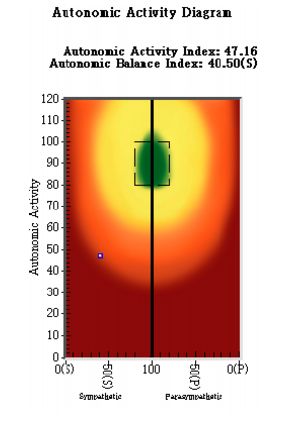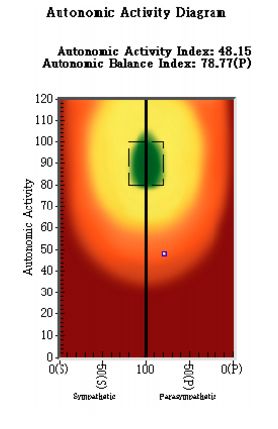Heart Rate Variability
What is Heart Rate Variability?
Heart Rate Variability (HRV) is the time between your heart beats. You may take your pulse for 15 seconds and get a number of beats. You multiply these beats by 4 and you get your heart beat rate per minute.
Let’s say you have a ‘beats per minute’ rate of 60, which translates to 1 beat every second. It reality, your heart isn’t beating every second. One beat could be at 0.8 seconds. Another could be at 1.2 seconds. The timing is so close together it’s hard to decipher with taking your pulse by hand. This variation is what makes up Heart Rate Variability.
Why is a Chiropractor using Heart Rate Variability?
The reason I use HRV is not to assess your heart but to assess your nervous system, which controls and coordinates your heart. What triggers your nervous system to adapt is your environment; how you eat, move, think, social, emotional, and spiritual. Traditional chiropractic is concerned with bone position along the spine (structure). This is usually assessed through x-ray. There is value in using x-ray in certain circumstances but for baseline assessment and follow up progress, I like to skip the radiation.
My genre of chiropractic is concerned with how well you function (i.e. functional chiropractic). How are all those life experiences dictating your health and adaptability expression?
Your body is a self healing, self-regulating organism. That self-healing, self-regulating ability is organized and coordinated via your nervous system. Structure of that spine will affect the function of the nervous system and your ability to heal. But you can be dead and have a great spine.
Nervous system function can only be assessed if someone is alive. HRV will only work if you’re alive and breathing so it gives a truer assessment of how well you will heal up, not just if your bones are pretty or not.
Since your ability to live and heal is based on your ability to adapt to life’s challenges, HRV is a great tool to assess nervous system adaptation. Your ability to adapt either sets you up for protection or for growth. You can’t be in protective and growth mode at the same time.
The more you are able to switch back and forth and maintain a harmony between the 2 sides of adaptation, the better your prognosis for healing, recovery, and repair. The more you default to one side vs. the other, the more you may struggle with your health and getting well.
One of the best parts about the HRV technology used at our office is that it’s non-invasive, painless, and fairly quick.
What do the Heart Rate Variability results mean?
For initial testing, it gives us a baseline of how your nervous system is adapting to life’s challenges. The results will look like a graph with a green target. You will see a white dot somewhere on the graph that represents your state of adaptability and how you are handling life’s challenges. Ideally, you want your white dot in the green shaded area.
The dot can also move up or down. This represents how much “fuel you have in the tank.” The higher the dot is, the more you can sustain life’s challenges. The lower the dot, the closer you are to burnout or crashing. The closer to the green box, the better health expression and/or the better the prognosis.
Great Result for HRV
The white dot can be left of the center black line. This would indicate that the person is on the side of protection or the gas pedal. This usually represents a high stress load and the pedal to the metal. In the short term, stress is a good thing to help you escape a perceived threat. When it’s long term and not dealt with, the body’s attempt at protecting the body actually causes the body to break down. You can only floor the gas pedal before you either crash or run out of gas.
Gas Pedal Dominant with Low Fuel
The white dot can be to the right of the line. This would indicate someone is on the growth side of life. You may think you always want to be on the growth side but chronically, this can create problems as well. Think of a baby. A baby would reside on the growth side but has no way of protecting himself. This is the brake pedal side of life. From clinical experience, when I see someone on this side of the scale, they are often medicated with things that slow down the nervous system like antidepressants, muscle relaxants, sleep drugs, and anti-psychotics. Being dominant on this side is also a sign of systemic fatigue and the body may be giving up.
Brake Pedal Dominant with Low Fuel
Whatever side you’re on will cascade your body into the other 4 pillars of chronic illness. This is where individuality determines treatment recommendations. This test can be used for almost any age. You do have to be able to sit still so it is typically used on patients older than 8 years old.
It’s a great tool for athletes to assess their training regime as well. Many athletes over train to the point of getting injured. This can be used to see if the athlete is training smarter so they can compete harder.
The beauty in improving your Heart Rate Variability score is that it all comes back to your lifestyle choices. The more you address all aspects of life, physical, chemical, and emotional, the better your body can handle those life challenges. Healthy people don’t have less stress in their life. Healthy people use more avenues in dealing with the stress of life. From personal experience as well as those that regularly get chiropractic at Dr. Kurt’s Place in Colorado Springs, chiropractic helps you adapt better to those life challenges.
Not sure if functional chiropractic or lifestyle medicine is right for you? Book a complimentary 15 minute phone consultation to discuss your questions and concerns with Dr. Kurt DC.



